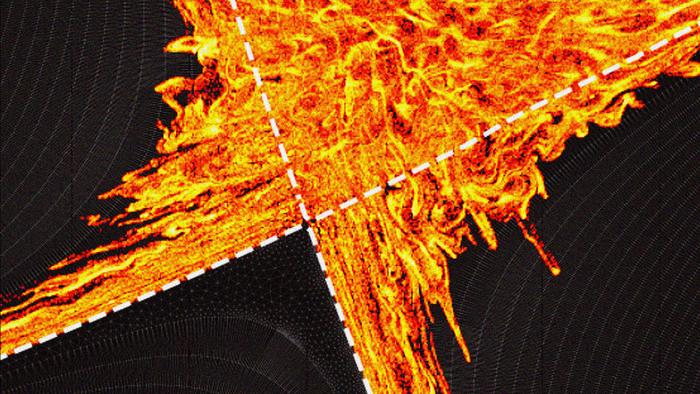A team of scientists from the Princeton Plasma Physics Laboratory, Oak Ridge National Laboratory, and the ITER Organization has discovered that the searing heat generated by fusion reactions in a commercial-scale reactor might not be as damaging to the vessel’s interior as previously thought. Their findings, recently published in the journal Nuclear Fusion, suggest that particles escaping the core plasma inside a tokamak collide with a larger area of the tokamak wall than once believed, significantly reducing the risk of damage.
Choongseok Chang, the PPPL Managing Principal Research Physicist who led the research team, emphasized the significance of this discovery. “This discovery fundamentally changes how we think about the way heat and particles travel between two critically important regions at the edge of a plasma during fusion,” he said.
Simulating the Plasma’s Escape Route
To achieve fusion, temperatures inside a tokamak must soar to more than 150 million degrees Celsius – 10 times hotter than the sun’s core. Containing such extreme heat is a daunting challenge, even with magnetic fields keeping most of the plasma confined in a central region known as the core. Some particles and heat inevitably escape, striking the material facing the plasma.
Chang and his team decided to study how the particles were escaping and where they would land on a device like ITER, the multinational fusion facility under construction in France. They created a plasma simulation using a computer code called X-Point Included Gyrokinetic Code (XGC), one of several developed and maintained by PPPL for fusion plasma research.
The simulation revealed that plasma particles traveled across the magnetic field surface intended to separate the confined plasma from the unconfined plasma, including the plasma in the divertor region. This surface, called the last confinement surface, is generated by external magnets.
Homoclinic Tangles: The Key to Protecting Tokamak Walls
In their latest paper, Chang and his colleagues showed that the last confinement surface is strongly disturbed by plasma turbulence during fusion, even in the absence of disturbances caused by external coils or abrupt plasma instabilities. “A good last confinement surface does not exist due to the crazy, turbulent magnetic surface disturbance called homoclinic tangles,” Chang explained.
The simulation demonstrated that electrons connect the edge of the main plasma to the divertor plasmas, following the path of these homoclinic tangles. This widens the heat strike zone by an additional 30% compared to previous estimates based on turbulence alone. As a result, the likelihood of the divertor surface being damaged by exhaust heat is further reduced when combined with the radiative cooling of the electrons by impurity injection in the divertor plasma.
“The last confinement surface in a tokamak should not be trusted,” Chang concluded. “But ironically, it may raise fusion performance by lowering the chance for divertor surface damage in steady-state operation and eliminating the transient burst of plasma energy to divertor surface from the abrupt edge plasma instabilities, which are two among the most performance-limiting concerns in future commercial tokamak reactors.”
This groundbreaking research, funded by the U.S. Department of Energy’s Fusion Energy Sciences and Advanced Scientific Computing Research, sheds new light on the complex dynamics of fusion plasmas and offers hope for the development of more resilient tokamak reactors. As scientists continue to unravel the mysteries of plasma physics, the dream of harnessing the power of the stars moves closer to reality.


